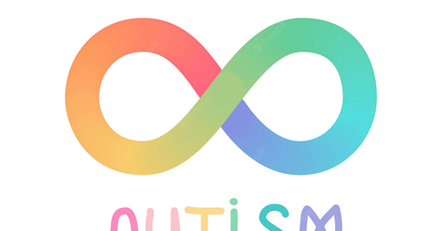What does it truly mean to live life to the fullest and flourish? This profound question has been contemplated for centuries, across cultures and philosophies. While there are no definitive answers, modern psychology provides a framework for breaking down the components of a deeply fulfilling human life.
Flourishing is one of the most promising concepts illuminated through the field of positive psychology research. It represents optimal functioning and experience of wellbeing across multiple life facets. Flourishing moves beyond temporary happiness and satisfaction – it encapsulates living the “good life” to its greatest potential.
This article will examine what ‘flourishing’ entails, its measurement, contributing factors, and how we can cultivate flourishing in our own lives. Keep reading for a comprehensive look at the psychology behind human thriving and fulfilment.
Defining Flourishing: Its Roots and Evolution
The notion of flourishing dates back millennia, resonating in philosophical ideologies from Aristotle’s emphasis on eudaimonia (happiness achieved through virtuous living), to Maslow’s concept of self-actualisation, to humanistic theories of growth and fulfilment.
However, flourishing as a formal psychological construct originated in the 21st century through the pioneering work of Martin Seligman, recognised as the founder of positive psychology.
Seligman initially viewed happiness as comprising positive emotions, engagement in activities, and a sense of meaning and purpose. Upon further examination, he determined two crucial elements were missing from his theory of “the good life” – positive relationships and a sense of accomplishment.
Thus, Seligman put forth his renowned PERMA model identifying five pillars associated with human flourishing:
- Positive Emotions – experiencing frequent pleasant emotions like joy, love, gratitude
- Engagement – immersing fully in activities and tasks
- Relationships – having meaningful interpersonal connections
- Meaning – possessing purpose in life and serving something greater
- Accomplishment – making progress toward goals and realising achievements
He posited these elements are pursued for their inherent value, not just as means toward some other end. Together, they represent the foundations for profound wellbeing and fulfilment (Seligman, 2011).
This multidimensional conceptualisation recognises flourishing as distinct from mere happiness or satisfaction. It requires optimising across emotional, psychological, social and potentially spiritual realms of life.
VanderWeele (2017) offers a complementary model spanning six domains: happiness, mental and physical health, meaning and purpose, character and virtue, close social relationships, and financial and material stability.
Synthesising perspectives, a working definition emerges:
Flourishing is the state of positive affect, vitality and optimal functioning resulting from sustained strengths across emotional, psychological, social, physical and potentially spiritual life facets.
Hallmark Characteristics of a Flourishing Life
While specific operationalisations differ, several key characteristics consistently emerge in theoretical models and measurement scales of flourishing:
- Happiness – experiencing frequent positive emotions like joy, contentment, and love
- Self-esteem – possessing a positive self-concept
- Optimism – maintaining a hopeful mindset toward the future
- Resilience – effectively coping with adversity and setbacks
- Self-determination – feeling agency over choices and ability to self-regulate
- Purpose – believing one’s life has coherence, meaning and significance
- Engagement – feeling interested and absorbed in daily activities
- Relationships – having mutually caring and trusting social connections
- Accomplishment – making progress on valued goals and feeling capable
- Physical Health – experiencing vitality and freedom from illness/pain
- Virtue – exemplifying ethical qualities like compassion, courage, and wisdom
Flourishing does not require perfection – challenges and struggles are inevitable. But it entails weathering trials with inner strength, supported by an abundance of light to counterbalance life’s difficulties.
As a complex construct, flourishing emerges through combined enhancement across these interrelated dimensions. In other words, there isn’t a single factor or element that can solely define what a flourishing life is, but together they represent profound thriving.
Ways to Measure and Assess Flourishing
With flourishing as a cornerstone of positive psychology, numerous measurement tools have been developed and validated to assess it empirically. While an exhaustive review is beyond this article’s scope, three promising examples include:
- PERMA Model Scale – Measures the five pillars of Seligman’s model using participant self-reports.
- Flourishing Scale – An 8-item scale evaluating self-perceived success in relationships, purpose, optimism, and other realms.
- COMPAS-W Scale – Examines flourishing across Happiness, Relationships, Virtue, Health, Success, Community, and Security.
These instruments quantify ‘flourishing levels’ using survey questions tailored to its multidimensional nature. They enable empirical research analysing causes and outcomes, and personalised feedback regarding one’s strengths versus growth areas.
However, flourishing transcends any single measure or score. Quantitative tools should complement reflective insight into one’s perceived well-being across various aspects of life.

External Contributors: Conditions Conducive to Flourishing
If flourishing represents the pinnacle of human thriving, what enables us to reach such heights? Research illuminates several key environmental conditions and inner strengths that cultivate flourishing:
External Factors:
- Basic needs met – Flourishing is unlikely to occur, without adequate food, shelter, safety, healthcare.
- Supportive upbringing – Nurturing child rearing fosters emotional intelligence and a sense of safety and trust.
- Education access – Learning cultivates skills and ignites passions.
- Positive institutions – Schools, workplaces and systems shape growth.
- Healthy community – Social connections provide meaning and support.
- Economic stability – Poverty undermines flourishing, wealth benefits diminish after basic needs are met.
- Cultural values – Cultural norms influence attitudes toward purpose, relationships, and living well.
- Work-life balance – Harmony between responsibilities and leisure, enables flourishing.
- Growth opportunities – Challenges and resources to actualise potential.
Internal Contributors: Conducive to Flourishing
While advantages like wealth and education can enable flourishing, human resilience prevails in difficult conditions when inner strengths are activated. With adequate social support, the human spirit can triumph over adversity.
Internal Qualities:
- Personality strengths – Extraversion, conscientiousness, self-esteem, optimism.
- Mental health – Managing stress and emotional difficulties
- Coping abilities – Adaptability, problem-solving, cognitive reappraisal
- Motivation – Drive toward self-realisation and growth.
- Self-efficacy – Confidence in one’s capabilities.
- Self-regulation – Impulse control, emotional regulation, self-discipline
- Growth mindset – Viewing abilities as developable with effort.
- Meaning and purpose – Pursuing meaningful causes greater than oneself.
- Gratitude – Appreciating the positive in each day.
- Spirituality – For some, faith provides meaning and transcendence.
While flourishing depends on both outer and inner conditions, our mindset and priorities remain within our control. We each have agency to cultivate our own flourishing.
Strategies for Enhancing Flourishing in Life
Flourishing is not random – it can be nurtured deliberately despite challenges. Consider these research-backed tips:
- Foster personal growth – Seek new experiences. Expand your skills. Extract lessons from setbacks.
- Develop meaningful relationships – Deepen connections with positive people. Share meaningful activities.
- Discover purpose – Define your core values. Pursue aligning causes greater than yourself.
- Increase positive emotions – Make time for humour, gratitude, awe. Savour joyful moments.
- Practice self-care – Eat nutritious foods. Stay active. Ensure adequate sleep.
- Help others – Volunteering provides meaning. Perform small acts of kindness.
- Cultivate optimism – Maintain perspective in adversity. Reframe thoughts constructively.
- Find flow states – Immerse in hobbies matching skills for growth.
- Express gratitude – Appreciate supportive people often. Articulate the good in your life.
- Embrace challenges – View obstacles as opportunities to demonstrate resilience.
The journey is not linear – flourishing fluctuates from day to day, week to week. But committing to these principles propels you upward overall. With concerted effort, you can create a deeply fulfilling life.
Flourishing Across the Lifespan
Does flourishing manifest consistently in the same way throughout life? Not necessarily. While core components remain constant, their focus and expression may evolve with changing priorities over time.
In youth, flourishing often centres on self-discovery, forging friendships, and laying foundations for the future.
During adulthood, opportunities arise to pursue meaningful work, cultivate intimacy, and make creative contributions to society.
Later life enables reflection on accomplishments, sharing wisdom, and deriving purpose through giving back.
At all ages, the essence of flourishing remains fulfilling your human potential, enriching others’ lives, and continual growth as life circumstances shift. Each season holds new journeys to be relished. ‘Flourishing’ opens our eyes to the multifaceted nature of a truly fulfilling life. Take a moment to reflect on the positive changes you can make in your life, and may your journey towards flourishing be filled with meaning, resilience, and the pursuit of genuine happiness. 😀












